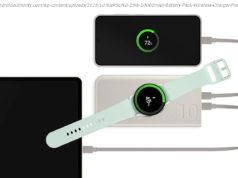After reaching its historic $1 trillion market cap, Apple still has plenty of room to grow
Apple’s historic $1 trillion milestone could soon be seen as a minor achievement on the way to even greater things.
Alhough it was the first U. S. publicly traded company to reach a $1 trillion market cap, Apple watchers think the company has plenty of growth ahead.
„This is not the end, that they hit $1 trillion,“ GBH Insights analyst Dan Ives told CNBC Thursday. „I view this as just kind of speaking to a new stage of growth and profitability.“
Here’s how Apple can grow well beyond $1 trillion.
iPhone sales growth may be slowing, but profits keep cranking along. For Apple’s fiscal third-quarter this year, Apple posted better-than-expected profits fueled by the iPhone business. That’s thanks to the iPhone X, which starts at $999. The X juiced Apple’s average selling price (ASP) of the iPhone to $724 and proved that Apple has the unique ability to keep profits growing at a healthy pace off a relatively flat user base. Samsung and other smartphone rivals have failed to recreate that winning formula.
The trend could continue, too.
According to spot-on tech analyst Ming-Chi Kuo of TF International Securities, Apple plans to release a larger version of the iPhone X this fall. That phone will be even more expensive than its thousand-dollar little brother, and will likely drive the iPhone’s ASP and profit growth even higher. There may never be a repeat of the iPhone 6 „super cycle,“ where a new large-size screen drove both a massive number of upgrades and new customer growth, but as long as the company can keep raising prices without scaring customers off, profits should keep growing.
Although Apple is primarily a hardware company, it’s building a strong services business around all its gadgets. The company’s services segment includes businesses like the App Store, Apple Music, AppleCare, and licensing fees, such as the fees Apple collects from Google to put its search in the Safari browser.
Apple has been talking up its services business for the last few years, and it’s already on pace to beat the company’s own goal of doubling the business by 2020. Last quarter, Apple booked $9.55 billion in services revenue, a 28 percent jump from the year-ago quarter.
Apple already has big plans to boost its services well beyond that. It’s developing a library of original television programming tied to some of the biggest names in entertainment and media like Oprah Winfrey, Steven Spielberg and Reese Witherspoon. It also recently bought a company called Texture, the so-called „Netflix of magazines“ that provides access to several popular periodicals for a monthly subscription. Although Apple hasn’t said how it plans to sell all this new content, it’s already putting all the pieces in place to squeeze even more money out of each iPhone owner through subscriptions.
Apple’s „Other Products“ category, which includes accessories like the Apple Watch, HomePod and AirPods, is another promising area of growth for Apple. That category booked $3.74 billion in revenue last quarter, up 30 percent from the year-ago quarter. Apple doesn’t break out individual sales of each product in the category, but it appears a lot of the growth was fueled by the Apple Watch, which CEO Tim Cook said grew „in the mid-40 percent range“ for the quarter. Apple is continuing to add features to the Watch, particularly around letting customers track and manage their health .
Meanwhile, the HomePod, which launched earlier this year, is just getting started. And a new report from Consumer Intelligence Research Partners estimates the $349 speaker is showing signs that it can catch up to Amazon’s four-year head start with the Amazon Echo by doubling its market share in the smart speaker category to 6 percent. Apple also has laid the groundwork for a bigger play in home automation with HomeKit, which lets iOS devices control and interact with other home devices.
There are more accessories coming. Bloomberg reports Apple is planning a high-end pair of over-the-ear, wireless headphones and new AirPods with noise cancellation that could launch in 2019.
Apple has a history of creating new hardware products that cannibalize its current lineup, and at some point it will probably do the same with the iPhone.
It’s already laying the groundwork for the next big thing after the iPhone through its augmented reality (AR) developer kit, which lets developers create apps for the iPhone and iPad that overlay computer-generated images on top of the real world.
Apple hasn’t been shy about its bullishness on AR, and by starting a vibrant developer ecosystem now, it puts itself in a good position to have plenty of AR apps ready to go if it decides to release some sort of futuristic AR glasses, as it has reportedly been developing. Those glasses would have the potential to one day replace most of the screens in your life by bringing up anything you want right in front of you. Goodbye, iPhone.
Another big opportunity is transportation. Cook has already confirmed that Apple is working on self-driving technology, which he called „the mother of all AI projects.“ It’s unclear how that project will ultimately take shape. There were reports a few years ago that Apple had plans to build its own car, but those ambitions seem to have been tamped down. The more likely scenario would be for Apple to create an operating system for the car that handles autonomous driving and infotainment centers.
In the end, $1 trillion is just a number. Apple already has the pieces in place to grow well beyond that.
— CNBC’s Sara Salinas contributed to this report.






